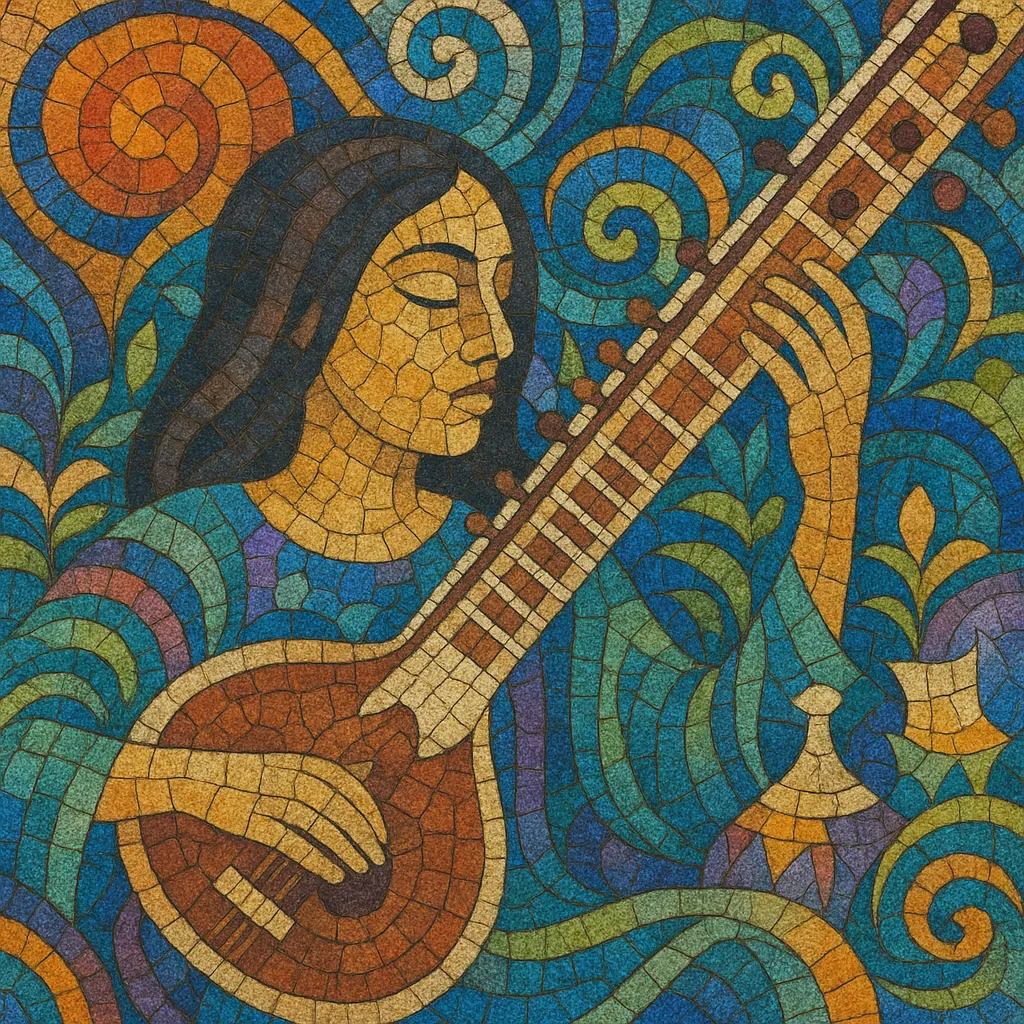
Sitarsploitation is a retro subgenre of pop, rock, and easy-listening that capitalized on the Western 1960s fascination with Indian sounds—especially the sitar. It typically features catchy, groove-led arrangements where the sitar or electric sitar takes the melodic lead over loungey rhythm sections, lush strings, vibraphone, and wordless choruses.
Rather than pursuing strict raga performance practice, sitarsploitation uses the timbre and ornamentation of the sitar in concise, radio-friendly formats. It blends psychedelic textures, exotica ambience, and light orchestral touches with drones and modal riffs inspired by Indian classical music.
Western interest in Indian music surged after high‑profile pop and rock figures embraced the sitar and raga influences. The Beatles’ mid‑1960s recordings and the broader raga rock movement created demand for the sound, while session scenes in London and Los Angeles experimented with Indian timbres in pop formats. A pivotal catalyst was the 1967 Coral/Danelectro electric sitar—designed with input from Vinnie Bell—which allowed guitarists to approximate sitar timbres without mastering traditional technique.
Budget labels and library-music houses quickly issued sitar-led instrumental LPs covering contemporary hits, film themes, and originals. Arrangers and session players—often credited under playful pseudonyms—framed the sitar in lush easy‑listening or soft-psych settings with bossa and backbeat grooves, drones, flutes, vibraphones, and strings. Notable touchstones include Lord Sitar (Big Jim Sullivan), Vinnie Bell’s electric‑sitar showcases, and crossover albums like Ananda Shankar’s 1970 set of psychedelic covers.
As psychedelia waned, sitarsploitation receded into crate‑digging obscurity, surviving in film and library catalogs and occasional pop one‑offs. Its spirit lived on in advertising cues and soundtracks seeking an "exotic" yet approachable sonic signature.
Lounge and library-music revivals in the 1990s–2000s reintroduced sitarsploitation via reissue compilations and DJ culture. Its fingerprints can be heard in neo‑psychedelia, hypnagogic pop, hauntology, and Asian Underground—styles that sample, reference, or update its dreamy drones, tambura pads, and electric‑sitar hooks while treating the era’s kitsch with both affection and irony.

